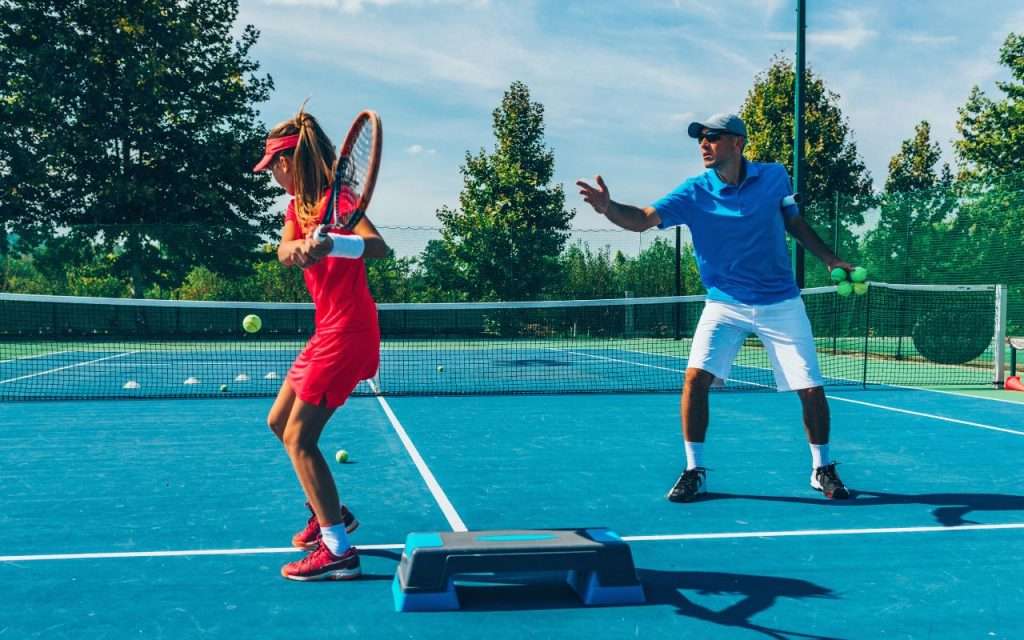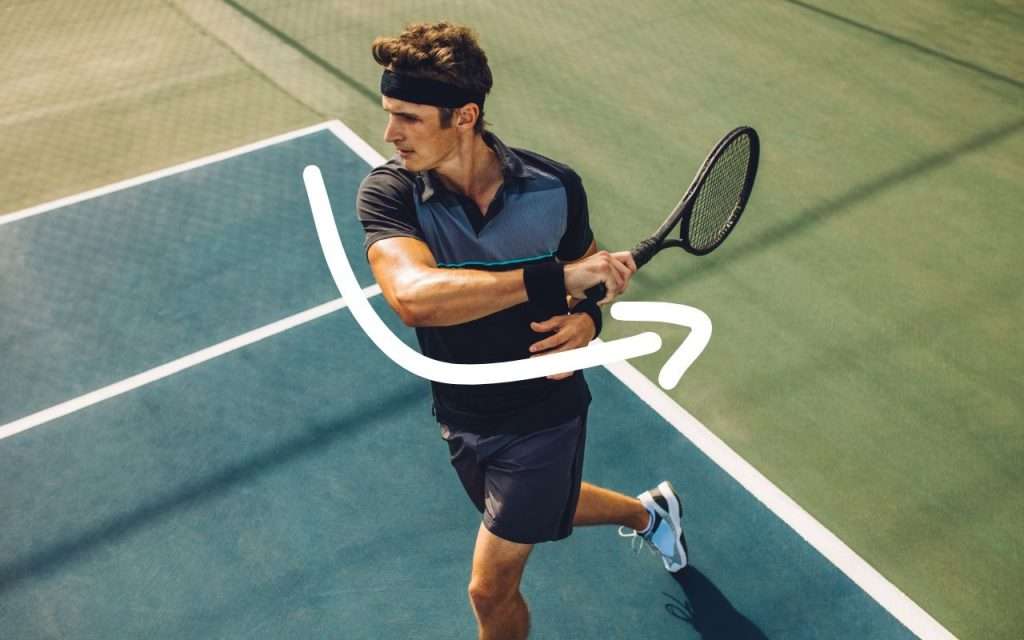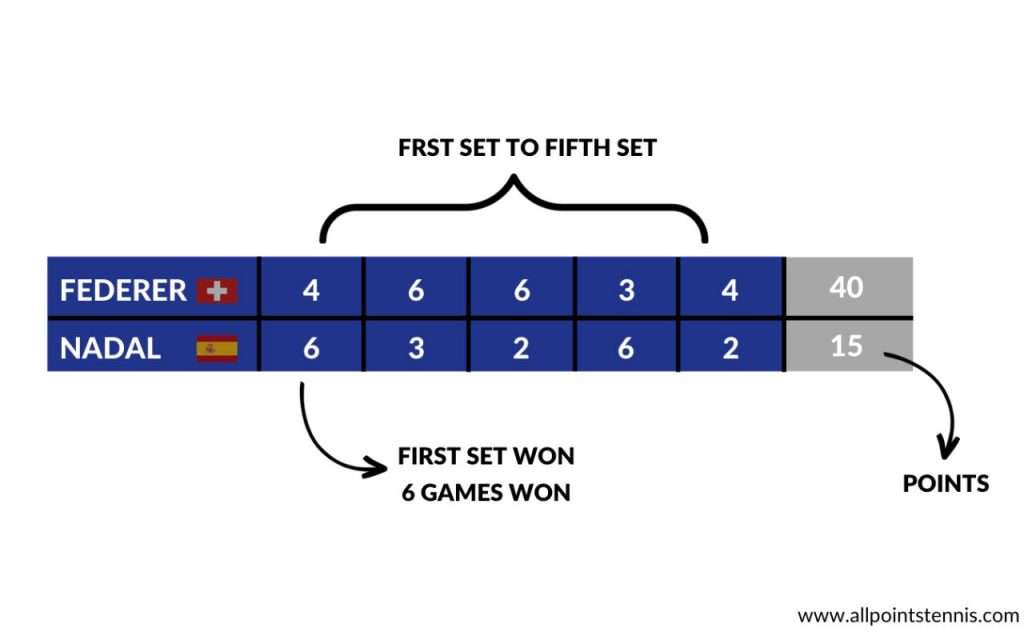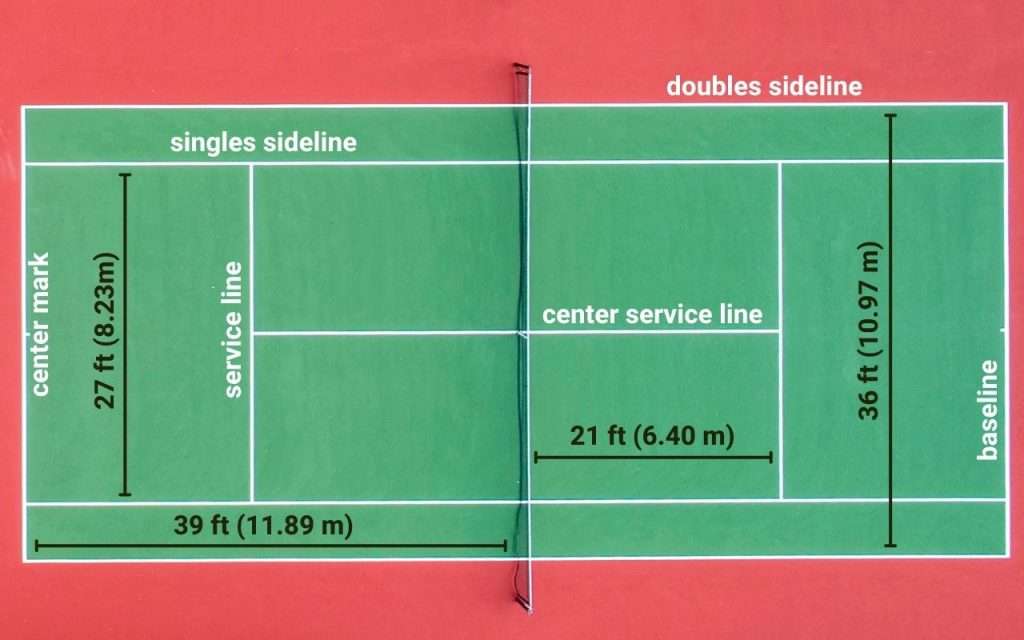Just starting out playing tennis? Then you come to the right place. Here you will get the most useful tennis beginner tips that have been verified by experienced tennis players.

By the time you finish reading this article, you are going to be fully equipped to start your tennis journey. Keep reading to find out all the critical beginner tennis tips and advice you need.
1. Essential Tennis Gears
Tennis Racket
When tennis beginner is selecting their first racket, the primary consideration should be what appeals to them aesthetically, such as the racket’s design and color.
As for the technical aspects, they should opt for a racket face between 98-100 sq. inches and an unstrung weight of 10 to 11 oz. Additionally, you can check the list of best tennis rackets for beginners to find out if you like any racket on the list.
A bonus tip, if someone is on a tight budget, they can consider getting a pre-owned racket, as they can upgrade it whenever they want to in the future.
Tennis Shoes
Never wearing regular sneakers when learning tennis. Unlike other physical activities, the design of tennis shoes considers particular ergonomic movements and can help to provide stability and increased speed, as well as protect your ankles.
Tennis Socks
Tennis socks are designed with thick heel pads and high compressions. They reduce the risk of your feet getting injuries.
Overgrips
A tennis overgrip is a necessity for any tennis racket, as it provides stability, comfort and sweat absorption while holding the racket. Additionally, it is replaceable, so you can switch to a new one whenever you need. Generally, this type of grip costs between two to five dollars and can often be purchased along with the racket.
2. Essential Tennis Grips
There are three basic tennis grips you need to know when first playing tennis.
Forehand Grip
We recommend starting with an eastern grip or semi-western grip and after a sufficient amount of time, your grip will naturally become the one you prefer.
Backhand Grip
There are two types of backhands, one-handed backhand and two-handed backhand. Check out the diagram below to figure out the backhand.
Continental Grip
This is a universal grip for serve, volley, slice, drop shot and overheads.
For more in-depth instructions on tennis grips, be sure to check out our article Tennis Grips Guide.
3. Warm-up and Cool-down Stretches
Tennis players of all levels must warm up before games to avoid injuries and properly prepare for matches. Here is a 5-minute full-body tennis warm-up you can follow before every match or training.
Stretching after games is also critical to reduce muscle soreness and recover faster after games. Here are some cool-down stretching exercises you can do to relieve muscle aches.
4. Get Non-dominant Hand Involved

If you ever watched a tennis game on TV, you will see pro players always using their non-dominant hand to push the racket to the side on their forehand or backhand.
There are three advantages: first, you can make your forehand or backhand preparation more stable and steady. Second, you can use your non-dominant to better navigate the coming ball, which makes it easier to hit. Third, by using your non-dominant to drive your body power on your forehand,
5. Swing Follow Through

The habit of following through after swing is often ignored by beginners. The core rotation is the foundation of tennis, and building a habit of following through will force you to turn your body completely so that you don’t over use your arms.
6. Control Over Power
A common mistake most beginners have is using too much power on their arms. Tennis is a game all about footwork and body power. Too much power or pressure on your arm will put yourself in a risk of wrist injury or tennis elbow. Therefore, learning how to control leads to emphasizing the proper movement and technique. Practicing against a wall is the best option for mastering control.
7. Record Your Training
Record your tennis training and then check afterward to see if anything needs to be changed, this is a more efficient way to improve. You don’t need to purchase any fancy stuff to take advantage of this technique, just utilize your smartphone.
8. Practice Regularly
The key to progress in tennis is consistency. It’s critical to play tennis at least once or twice a week, but three or four times is better. It’s difficult to develop muscle memory if you don’t practice frequently. Practice consistently and you’ll be able to handle the stress of tennis better and enjoy it more little by little.
9. Basics Rules and Terms

Scoring System
- First point = 15
- Second point = 30
- Third point = 40
- Fourth point = Win a Game
- Deuce = 40 : 40 (both players win 3 points)
- Advantage (AD) = player wins the next point after a deuce
- Win a Game from a Deuce = player wins two consecutive points
How to Win a Match
A player has to typically win four points to win a game and a minimum of six games, with a two-game difference, to claim a set. The player has to win three of a 5 sets match or two of a 3 sets match to win the match.
If you’re interested to know more, check out our article about tennis terms and rules.
10. Understanding the Court
Briefly speaking, there are three types of tennis courts, they are hard court, grass court, and red clay court. Hard courts are the most accessible ones. In addition, check out the diagram below so that you will better understand the meaning of those white lines.

11. Off-court Training
You can find tons of off-court tennis drills but these two pieces of training are the most essential ones for beginners. Just simply follow through with the explanation below, these training will help you progress easier at the beginning of the tennis journey.
Practice Against Wall
Once you get a basic understanding of forehands and backhands, you can play tennis against the wall to enhance muscle memory and learn how to control your power. One thing to note is that a green dot tennis ball is your go-to option for your tennis wall drills.
Footwork Drills
Footwork probably is the most underrated training that beginners tend to ignore. Besides, one of the famous tennis quotes by Roger Federer is “My game is a lot about footwork. If I move well, I play well.”
Here are some easy beginner-level footwork drills for you to follow and practice. There is no doubt, the more footwork training you have, the easier you can perform on the court. It definitely pays off.
12. Objectives Matter
When starting out, it’s important to remember what your objectives are while playing tennis. For those just starting out, the main objective should be to hit a full forehand, backhand, or volley in the correct stance with proper footwork.
When your only aim is to win, you are likely to make errors during the match.
13. Overall NTRP Rating
NTRP ratings are the popular systematics ratings from USTA to rate your tennis level from 1.0 to 7.0.
The new tennis player ranges from 1.0 to 1.5, the beginner level is 2.0 to 3.0, the intermediate level is 3.0 to 4.5, and the advanced ranges from 5.0 to 6.0, the 6.0 or above is pro players level and are likely played international tournaments and have obtained a national ranking.
14. Favorite Tennis Pro Player
Do not underestimate the influence of a role model. You will possess two great forces: motivation and direction.
You can easily find video clips of pro tennis players on the internet, so which professional tennis player do you like to observe and copy their style of technique? Every professional player has a distinct approach, this is a great place to begin. Eventually, you will craft your own style.
15. Split Step
The split step is the most important footwork you will do between each shot and will help you get ready for each stroke. Make sure to do the split step once your component hits the ball.
FAQs
What should a beginner learn in tennis?
A beginner should learn and practice the 3 main tennis strokes that are forehand, backhand, and serve. These 3 main shots are essential ones so that you can have recreational tennis matches.
Can tennis be self-taught?
Yes, of course, you can learn to play tennis on your own by studying tennis instruction articles or videos online. The downside of this is that it would take longer to reach the skill level you desire in comparison to getting private tennis lessons.
How can a beginner get better at tennis?
Practicing consistently is the key to getting better at tennis, 2-3 times a week is a perfect starting point.
What’s Next
That was it for our top 15 essential beginner tennis tips! We hope this guide was helpful. If you have any specific questions regarding tennis beginner tips, feel free to reach us via email.
On the other hand, be sure to check out our other popular articles about tennis tips and guides. In the meantime, do enjoy playing tennis as much as you can!
